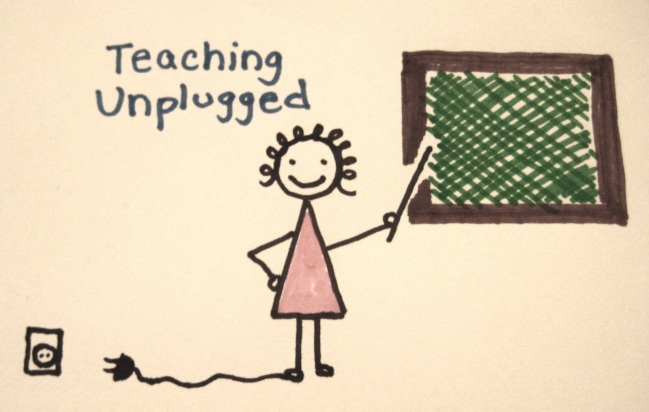As defined by Teaching English (a website for teachers by the British Council), unplugged teaching is: “Teaching Unplugged is the term used for a teaching method and philosophy which has three primary aims: teaching through conversation, taking out external input such as course book and technology and letting the lesson content be driven by the students rather than being pre-planned by the teacher. Based on the ‘Dogme ELT’ approach to teaching, its origins lie in an article written in 2001 by Scott Thornbury and Luke Meddings called ‘The roaring in the chimney’. They later wrote ‘Teaching Unplugged’, a comprehensive guide to this type of teaching and winner of the British Council ELTons award for Innovation in 2010.” (by swiffin on 26 March, 2014)
What that really means is that learners are truly at the center of the lesson and they take control over what sort of language is being taught to them. A simple example would be when talking about travelling ask your students to bring whatever realia they wish (connected with travelling, of course!) to class and build your lesson around it.
Have you tried it before? If not, why? Would you like to? Please share your experiences!

I remember being a student at one of such lessons and taking over the teaching for an hour. I must say it is so much fun to take a shot at preparing a lesson, engaging other students in a conversation. I think both students and teachers would enjoy switching roles once in a while, and it is a great way for students to understand the teaching/learning process.
LikeLiked by 1 person
What a great insight, Elena! Definitely worth remembering your own experiences as a learner when teaching a class!
LikeLike